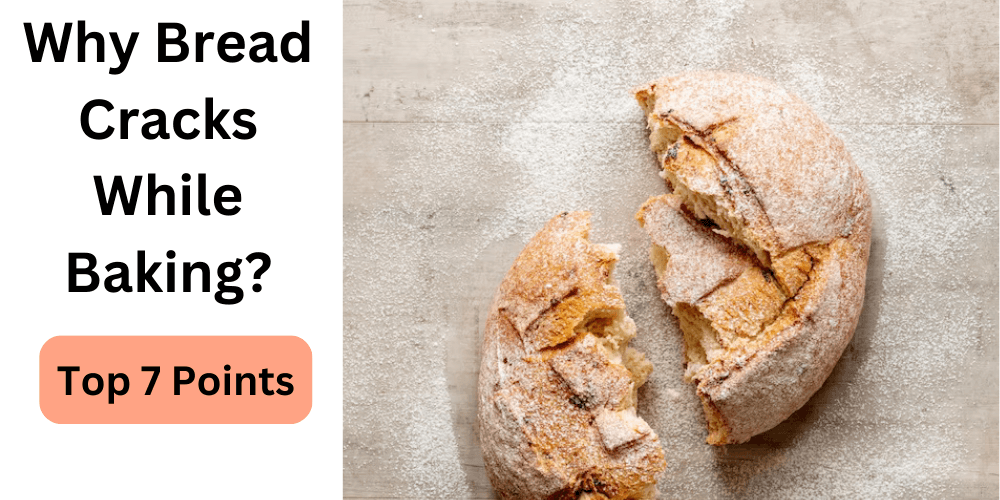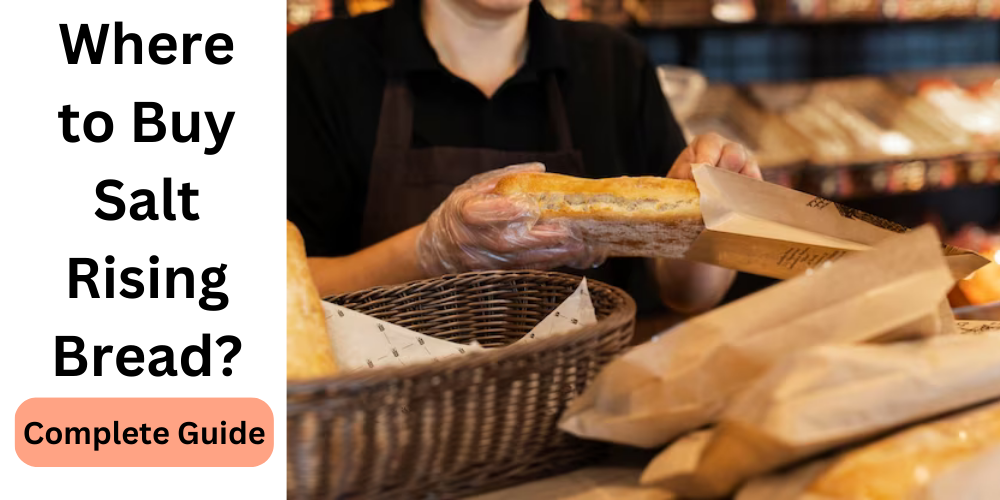Have you ever pulled a freshly baked loaf of bread out of the oven, only to find it cracked on the surface? The sight of those cracks can be disappointing, especially after all the effort put into making the perfect loaf. But fear not! In this article, we will delve into the science behind why bread cracks while baking and explore tips to prevent it. So let’s get started!

Why Bread Cracks While Baking?
To comprehend why bread cracks while baking, we must explore various factors that contribute to this phenomenon. Let’s dive into the science and explore the following aspects:
1. The Science of Bread Cracking
To understand why bread cracks, we must first explore the science behind the baking process. As bread bakes, the moisture inside the dough turns into steam, causing the dough to rise. However, if the outer surface of the bread sets too quickly, it restricts the expansion of the dough beneath, leading to cracks.
2. Overproofing and Underproofing
One common cause of bread cracking is improper proofing. Overproofed dough has risen for too long, causing the gluten structure to weaken, leading to cracks during baking. On the other hand, underproofed dough lacks sufficient time for the gluten to relax, resulting in tension and cracks.
3. Types of Bread Prone to Cracking
Certain types of bread are more susceptible to cracking than others. For example, bread with high hydration levels, such as ciabatta or baguettes, is more likely to crack due to the extra moisture content. Additionally, enriched bread with added fats and sugars may also be prone to cracking.
4. Tips to Prevent Cracking
- Properly proof your dough: Pay attention to the recommended proofing times to ensure the dough has the right amount of time to rise.
- Control the oven temperature: Uneven oven temperatures can cause rapid drying and uneven expansion, leading to cracks.
- Score the dough: Make shallow cuts on the surface of the dough before baking to control its expansion and prevent cracking.
- Add steam: Introducing steam into the oven during the first few minutes of baking can help keep the bread surface moist, reducing the chances of cracks.
5. Moisture Content and Bread Structure
The moisture content of the dough plays a significant role in bread cracking. Too much moisture can lead to excess steam production and cracking, while too little moisture can result in a dry crust that is prone to cracking. Finding the right balance is crucial for achieving a crack-free crust.
6. Oven Conditions
Proper oven conditions are essential for achieving optimal results. Preheating the oven adequately and maintaining a consistent temperature throughout the baking process can help ensure even expansion and reduce the risk of cracks.
7. Case Studies
To provide practical insights, we will explore a few case studies of common bread cracking scenarios and discuss possible solutions.
Related Guides:
How Do You Keep Bread From Splitting When Baking?
To prevent bread from splitting while baking, it’s essential to follow proper proofing techniques, control the oven temperature, and ensure the dough has the right moisture content. Additionally, scoring the dough and using steam during the initial baking stages can also help prevent splitting.
What Would Cause The Top Of A Quick Bread To Crack?
Quick bread, which typically relies on baking powder or baking soda for leavening instead of yeast, can also be prone to cracking. Overmixing the batter or using too much leavening agent can cause excessive expansion and cracks on the top surface. Carefully follow the recipe instructions and avoid overmixing to keep your quick bread intact.
What Causes Dough To Crack?
Dough can crack due to various reasons, including overproofing, insufficient hydration, improper shaping, or excessive handling. Understanding the specific causes of cracking and adjusting your baking techniques accordingly can help prevent this issue.
How Do You Make Perfect Crack In Bread?
If you’re aiming for a perfect crack on the surface of your bread, artisan bread recipes often utilize specific scoring techniques to achieve this desired aesthetic. By making precise, deliberate cuts on the surface of the dough, you can control its expansion and create an appealing crack pattern.
Conclusion
Understanding why bread cracks while baking is essential for achieving perfectly baked loaves. By following proper proofing techniques, controlling oven conditions, and managing dough moisture content, you can minimize the risk of cracks and enjoy flawless bread every time. Experiment with different recipes, techniques, and ingredients to find the perfect balance for your desired bread texture and appearance. Happy baking!
Remember to practice patience and persistence as you refine your baking skills. With time and experience, you’ll master the art of baking crack-free bread that delights both your eyes and taste buds. So roll up your sleeves, preheat that oven, and let the aroma of freshly baked bread fill your kitchen.
Sources:
- By Ajit Singh Bhatnagar, When baking bread, what does it mean when the top crust cracks but doesn’t separate from the rest of the loaf? Posted 6 Years ago




